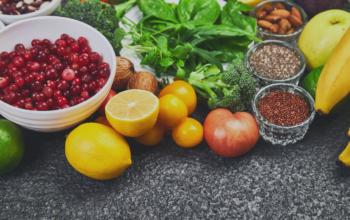the alkaline diet

My grandfather Ernesto—a lover of nature and healthy eating—would wake his daughters up at six in the morning to take them for a run around the block before taking them to school. For breakfast, he would make them a smoothie with the eggshell included. “It has many benefits,” he claimed.
It's undeniable that, whether you were a fan of healthy eating or not, our ancestors' diet was very different from ours. What they ate was natural and organic; it wasn't processed, preserved, or flavored with unpronounceable chemicals or hormones.
Despite scientific discoveries like penicillin, millions of dollars invested in medical and technological research to cure diseases, and growing foods that last longer and look and taste better, humans today face far more health challenges than our grandparents did.
Needless to say, the increase in chronic degenerative diseases is also common, as is the lack of energy, frequent colds, anxiety, muscle pain, irritability, and headaches.
One of the main causes is the increased consumption of acid-forming foods such as sugar, saturated fats, white bread, and others.
The 80/20 rule
Our blood is slightly alkaline, with a normal pH level between 7.35 and 7.45. So a diet high in acid-forming foods disrupts this balance and promotes the loss of essential minerals like potassium, magnesium, calcium, and sodium as the body tries to restore its balance. This imbalance is thought to be what makes people more prone to illness. How about that!
By the way, the term "pH" refers to "power of hydrogen" and comes from a chemical formula for calculating the concentration of hydrogen ions present in a substance. A pH of 7 is neutral. A pH above 7 is alkaline. A pH below 7 is acidic. Pure water, for example, has a pH of 7.
“Your health depends on an alkaline environment in your body, which is created by eating foods like avocados, tomatoes, and green vegetables… To achieve the 80/20 balance, you must eat 70 to 80 percent alkaline foods and 20 to 30 percent acidic foods. This will help you regulate your body’s acid/alkaline chemistry through simple changes that can result in weight loss, increased energy, a stronger immune system, and a greater sense of well-being,” says Dr. Robert O. Young, pioneering scientist and author of the book El milagro del pH.
Foods that contain alkaline minerals are the ones that benefit us: fresh fruit, vegetables, roots, tubers, nuts, legumes, and foods low in sugar. You might wonder about those that leave an acidic ash, which, as you guessed it, are sweets, alcohol, saturated fats, excess salt, meat, cheese, white flour, milk, and so on.
In general we can say that, vegetables and fruits, Beets, Broccoli, Pumpkin, Carrot, Celery, Cauliflower, Cucumber, Eggplant, Green beans, Lettuce, Mushrooms, Peas, Squash flower, Onion, Garlic, Peppers, Radishes, Spinach, sprouts, watercress, sweet potato, tomato, Shitake mushrooms.
Apple, strawberry, peach, avocado, banana, blackberries, blackberries, honeydew melon, cherries, coconut, dried figs, grapes, grapefruit, lemon, lime, orange, melon, nectarine, pear, pineapple, raisins, dried dates, tangerine, raspberry, papaya, watermelon, almonds, walnuts.
Why not start the Alkaline Diet to feel and look healthier and better?
